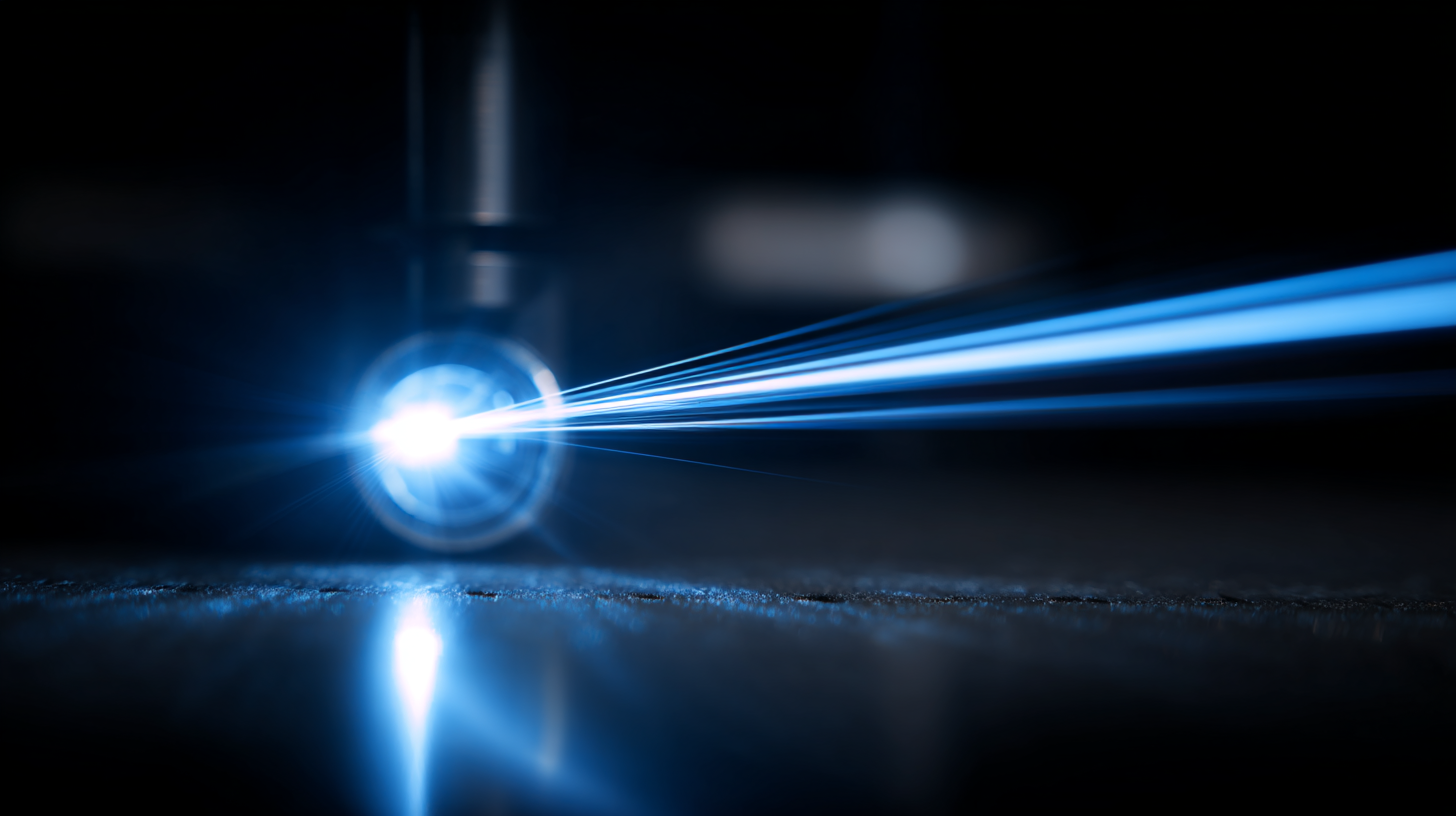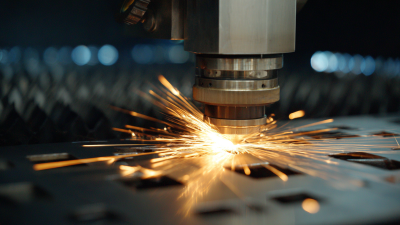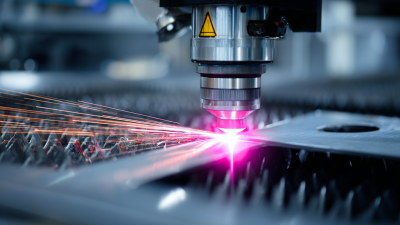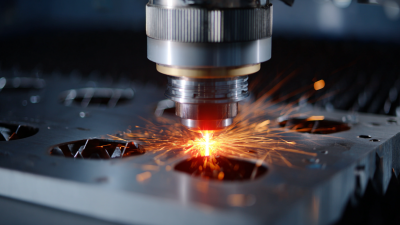Unlocking the Future of Design: How Custom Laser Cutting is Revolutionizing Creative Industries
In recent years, custom laser cutting has emerged as a transformative technology within the creative industries, reshaping design processes across various sectors. According to a recent report by Smithers Pira, the global market for laser cutting is set to reach $7 billion by 2025, indicating a compound annual growth rate (CAGR) of over 7%. This remarkable growth underscores the increasing reliance on custom laser cutting for precision, efficiency, and innovation in design.
 From intricate patterns to bespoke art pieces, designers now have the ability to manipulate materials with unmatched accuracy, allowing for greater creativity and personalization in their projects. The expansion of laser cutting technologies empowers artists and manufacturers alike, facilitating a new era where customized solutions meet the dynamic demands of consumers.
As we delve deeper into the implications of this technology, it becomes clear that custom laser cutting is not just a tool; it is a catalyst for the future of design.
From intricate patterns to bespoke art pieces, designers now have the ability to manipulate materials with unmatched accuracy, allowing for greater creativity and personalization in their projects. The expansion of laser cutting technologies empowers artists and manufacturers alike, facilitating a new era where customized solutions meet the dynamic demands of consumers.
As we delve deeper into the implications of this technology, it becomes clear that custom laser cutting is not just a tool; it is a catalyst for the future of design.
The Rise of Custom Laser Cutting in Creative Industries: Key Statistics and Trends
The custom laser cutting industry is experiencing significant growth within the creative landscape, driven by a blend of technology and artistry. As businesses increasingly seek ways to differentiate their products, custom laser cutting provides unparalleled precision and versatility. Statistics show that demand for personalized items in areas such as printed wedding merchandise has surged, with photobooks and albums leading the way. This trend highlights a broader movement toward customization across various creative sectors, where brands are eager to cater to the unique desires of consumers.
Moreover, the integration of automation in fields like fashion is complementing the rise of custom laser cutting. By streamlining production processes with robotic garment assembly and AI-driven analytics, brands can now offer bespoke items at scale. This dual advancement not only enhances efficiency but also fosters innovation, allowing designers to experiment with intricate designs and materials. As these technologies continue to evolve, the creative industries are poised for a revolution that prioritizes personalization and efficiency, setting the stage for an exciting future.
Transforming Traditional Design Methods: The Impact of Laser Technology on Creative Processes
 The advent of laser technology has dramatically transformed traditional design methods, enhancing creative processes across various industries.
Laser cutting, as a precise and efficient fabrication technique, allows designers to explore new dimensions in their work, enabling intricate patterns and refined details that were previously difficult to achieve.
For instance, artists like Tina Bobbe are redefining everyday objects, such as coffee machines, converting them into artistic masterpieces. This innovative approach reflects how laser cutting can blend functionality with creativity, pushing the boundaries of traditional design.
The advent of laser technology has dramatically transformed traditional design methods, enhancing creative processes across various industries.
Laser cutting, as a precise and efficient fabrication technique, allows designers to explore new dimensions in their work, enabling intricate patterns and refined details that were previously difficult to achieve.
For instance, artists like Tina Bobbe are redefining everyday objects, such as coffee machines, converting them into artistic masterpieces. This innovative approach reflects how laser cutting can blend functionality with creativity, pushing the boundaries of traditional design.
Moreover, the influence of technologies such as 3D printing complements the capabilities of laser cutting, further revolutionizing creative industries. With applications ranging from personalized fashion to sustainability in manufacturing, designers are empowered to create bespoke items that resonate with individual consumer preferences. These technological advancements not only streamline the design process but also foster a culture of innovation where traditional boundaries are consistently challenged, encouraging creatives to reimagine the possibilities of their work. As these technologies continue to evolve, the future of design promises to be more dynamic and imaginative than ever before.
Cost Efficiency and Precision: How Laser Cutting Reduces Waste in Design Projects
In the realm of design, custom laser cutting is emerging as a transformative technology that enhances cost efficiency and precision, particularly in the creative industries. By leveraging advanced techniques such as digital fabrication, designers can dramatically reduce material waste during production. This technology not only allows for intricate and precise cuts but also optimizes the use of raw materials, which is crucial in fostering sustainable design practices.
Recent innovations in laser cutting are revolutionizing the textile and apparel sectors, as manufacturers seek out high-speed, accurate cutting solutions to keep pace with market demands. The ability to create complex patterns and shapes with minimal excess material is reshaping production strategies, paving the way for environmentally conscious manufacturing. As industries increasingly turn to laser technology, the enhanced accuracy and efficiency it offers will undoubtedly continue to make significant impacts, driving a more sustainable future in design.
Case Studies: Successful Implementations of Laser Cutting in Various Creative Fields
In the realm of creative industries, custom laser cutting has emerged as a transformative tool, enabling designers to push the boundaries of their imagination. One remarkable case study comes from the fashion sector, where designers have utilized laser cutting to create intricate patterns and textures on fabrics that were previously impossible to achieve. This precision not only enhances the aesthetic appeal of garments but also streamlines production processes, resulting in faster turnaround times and reduced waste.

Another compelling example can be found in the architectural field, where laser cutting is used to produce complex models and prototypes. Architects can translate their visions into tangible forms with unparalleled accuracy, facilitating better communication of ideas to clients and stakeholders. A notable project involved a contemporary art installation that incorporated laser-cut elements, blending art with innovative design techniques that captivated audiences and redefined environmental interactions. These case studies illustrate how laser cutting is not merely a technological advancement; it is a catalyst for creative exploration across various disciplines.
Future Opportunities: The Potential of Laser Cutting in Emerging Design Technologies
Custom laser cutting is rapidly transforming creative industries by opening up new avenues for design possibilities. As emerging technologies enhance the capabilities of laser cutting, designers are empowered to experiment with intricate patterns and unique materials. This technological advance not only streamlines production processes but also fosters innovation by allowing for more personalized designs that cater to specific consumer needs. The integration of laser cutting with CAD software has led to precision and efficiency, making it easier for industries like fashion, architecture, and product design to push their creative boundaries.
**Tips for Designers:** When working with laser cutting technology, consider starting with smaller prototypes to test out your designs. This iterative process can help refine your ideas before full-scale production. Additionally, staying updated with the latest software developments can significantly enhance your design workflow, allowing you to visualize and iterate faster.
The potential of laser cutting extends into various fields, including the burgeoning world of sustainable design. By using laser-cut materials that have lesser waste generation, designers can maintain aesthetic appeal while being eco-conscious. Investing time in understanding the material properties and their interactions with laser cutting can lead to innovative designs that resonate with today's environmentally aware consumers.
Unlocking the Future of Design: The Impact of Custom Laser Cutting
This chart illustrates the growth in various design industries impacted by custom laser cutting technologies from 2018 to 2023. As more designers adopt laser cutting, we can see significant increases in sectors such as Architecture, Fashion, and Interior Design.
Related Posts
-

Unlock Unlimited Possibilities with Custom Laser Cutting for Your Unique Projects
-

Unlocking Creativity with Custom Laser Cutting Techniques for Unique Designs
-

The Future of Manufacturing with Metal Laser Cutting Technology Explained
-

Unlocking the Power of Laser Etching in Modern Manufacturing
-

Emerging Trends in Stainless Steel Laser Cutting Technologies at the 138th Canton Fair 2025 in China
-

Exploring Laser Machining Innovations at China Import and Export Fair 2025

